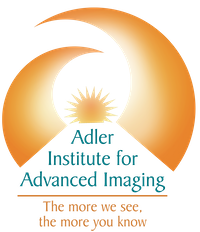



The Role of Medical Imaging in the Diagnosis and Treatment of Disease
Positron Emission Tomography (PET) is a non-invasive imaging procedure that helps physicians make an earlier diagnosis of certain kinds of cancer and other diseases.
How does it do this? Many cancers cause increased glucose metabolic rates: in other words, cells begin to grow at a much faster rate, feeding on sugars like glucose. PET works by using a small amount of a radioactive drug called a tracer in combination with a compound such as glucose. Once you are injected with the tracer and glucose, the tracer travels through your body. It emits signals as it travels and eventually collects in the organs targeted for examination. If an area in an organ is cancerous, the signals will be stronger since more glucose will be absorbed in those areas. The PET scan detects and maps those signals. These elevated rates often precede other cancer-related changes in the body, like tumor growth. So PET helps identify the presence of cancer earlier than other kinds of tests and techniques. The earlier that cancer is diagnosed, the better chance of a successful treatment.
Computed Tomography (CT) combines x-rays and computer technologies for a non-invasive method of seeing inside your body.
A PET/CT Scan combines both technologies in one device – and results in images showing the metabolic changes mapped clearly and specifically to the patient’s anatomy. When read and interpreted by an imaging expert, this provides a great deal of information on which to base a diagnosis and determine the next step in treatment.
